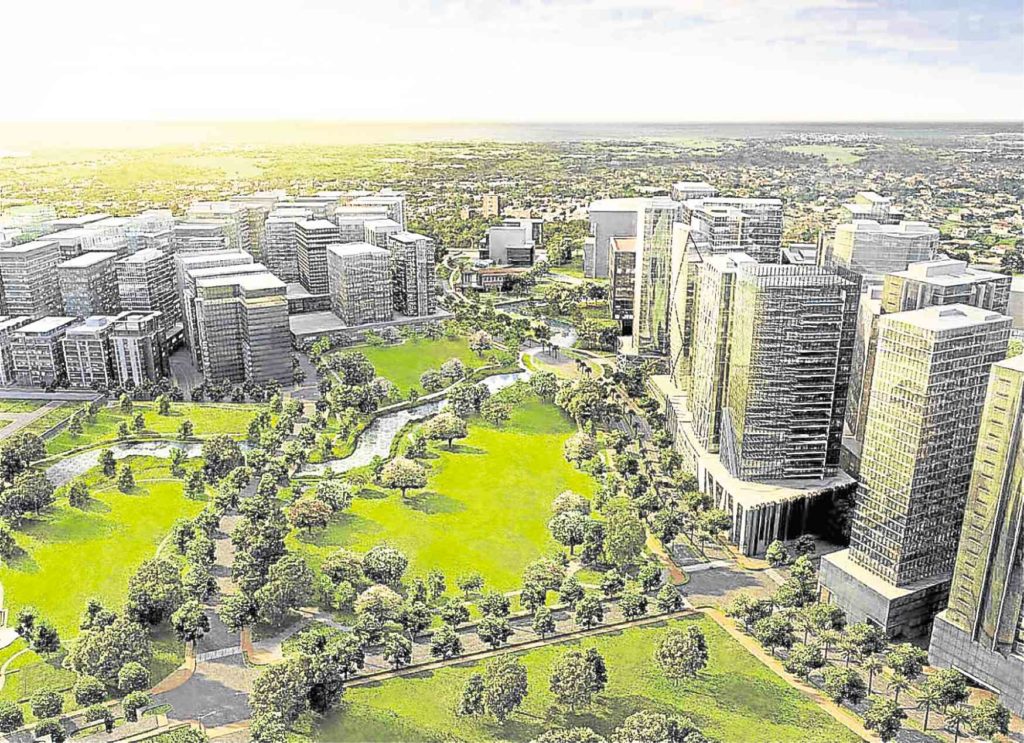
The effort is obvious: from families investing in making their homes “smart” through the installation of solar panels and energy efficient lighting fixtures for example; developers creating communities that are sustainable and environment friendly; to government agencies pushing for policies that would mandate the “greening” of company operations, manufacturing facilities, and buildings, among others.
Building resilience
There is a good reason why this is so. The devastation wrought by many typhoons and other natural disasters that had hit the country in the past decade had prompted the need to build the country’s resilience against climate change. This meant investing more in green architecture to make structures more sustainable and more efficient.
“As the Philippines is in a typhoon belt and the ring of fire, the country is susceptible to typhoons, earthquakes and volcanic eruptions. These are a huge threat to the sustainability in the country,” Miguel Guerrero, chair of Green Architecture Advocacy Philippines and managing partner of Asian Architects, said in an e-mail interview.
“An aspect of green architecture is also disaster resilience. We have an urgent need to design and build more disaster resilient structures and communities and this is critical at the moment,” Guerrero added.
Remarkable progress
Today, the green building sector in the Philippines, unsurprisingly, continues to see promising growth as evident in the number of certified sustainable buildings.
After all, it does make more sense to switch to sustainable green buildings and structures as this move can already yield anywhere between 20 and 40 percent savings on utilities for the average Filipino family.
“There is significant progress in the Philippine market with more companies starting to understand the importance of green building and sustainability in future-proofing the economy and country,” explained Louise Chua, project director of Build Eco Xpo (BEX) Asia at Reed Exhibitions.
“One example of the progress made is the green building certification schemes made available in the Philippines, and the fact that many building projects are taking the initiative to get certified under their requirements. One such scheme is the Leadership in Energy and Environment Design (LEED),” Chua said.
Data from Reed Exhibitions showed that there are 245 LEED projects in the local market, and 61 have already received the certification, representing a square footage of 16.98 million. Under the Green Mark certification scheme originating from Singapore, there are two certified Green Mark projects in Manila, namely Citadines Salcedo Makati and the Ascott Bonifacio Global City.
“Over the last 10 years of organizing BEX Asia, we have also seen a rapid increase in event participation and attendance from the Philippines. Philippines ranks second in overseas attendance at the event behind Malaysia, highlighting how the Philippines’ building industry is taking sustainability seriously,” Chua added.
Embracing sustainability
The Philippines, however, still has a lot to do as far as greening and sustainability are concerned.
For one, achieving a wider scale adoption of such measures remains a goal. There’s also a need to keep up with new cutting edge technologies and solutions that offer better ways of building resilience.
Here is when events such as BEX and MCE Asia—two trade shows for the green building and energy efficiency across industries—provide a much needed platform to connect industry players across the region and allow for a sharing of best practices. Such events also allow companies to showcase their respective technologies and solutions.
BEX Asia is set to welcome international visitors at the Marina Bay Sands, Singapore from September 12 to 14.
It will be held in conjunction with Mostra Convegno Expocomfort (MCE) Asia, a regional HVAC-R, water and energy exhibition and International Green Building Conference (IGBC), the premier conference that encourages the collaborative sharing of ideas among stakeholders, policymakers and government agencies.
“In its 10th edition this year, BEX Asia has continued to evolve as a linchpin in the transformation of the building and construction industry. We are proud to bring the region’s best minds together and provide industry players with access to the latest tools, technologies and expertise they need to propel sustainable building forward,” Chua said.
“We hope that more developers and building owners in the Philippines will see the value of going green, beyond the initial costs that need to be incurred. As one of the top 10 countries most vulnerable to climate change, it is vital for all stakeholders in the Philippines to embrace sustainability for a better future,” Chua concluded.